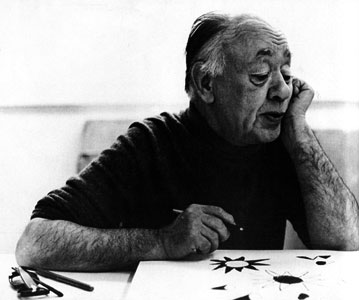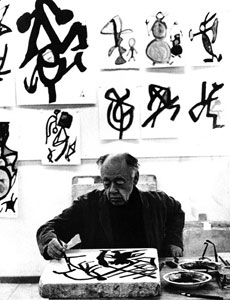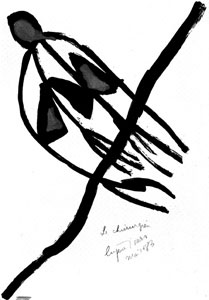Eugene Ionesco 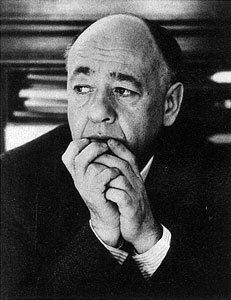 At his peak in 1963, Ionesco was a celebrity name in gossip columns and a colleague of stars from Barrault to Olivier Ionesco's earliest works, and his most innovative, were one-act nonsense plays: La Cantatrice chauve (1950), La Leçon translated as The Lesson (1951), Les Chaises translated as The Chairs (1952), and Jacques ou la Soumission translated as Jack, or: The Submission (1955). These absurdist sketches, to which he gave such descriptions as "anti-play" (anti-pièce in French) express modern feelings of alienation and the impossibility and futility of communication with surreal comic force, parodying the conformism of the bourgeoisie and conventional theatrical forms. In them Ionesco rejects a conventional story-line as their basis, instead taking their dramatic structure from accelerating rhythms and/or cyclical repetitions. He disregards psychology and coherent dialogue, thereby depicting a dehumanized world with mechanical, puppet-like characters who speak in non-sequiturs. Language becomes rarefied, with words and material objects gaining a life of their own, increasingly overwhelming the characters and creating a sense of menace. 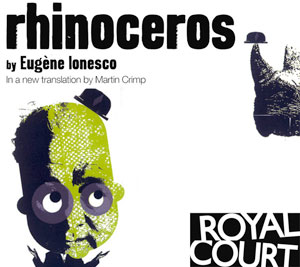 rhinoceros by Eugène Ionesco - advert for the play at the Royal Court Theatre performed during the autumn and winter of 2007. rhinoceros by Eugène Ionesco - advert for the play at the Royal Court Theatre performed during the autumn and winter of 2007.Bérenger is a semi-autobiographical figure expressing Ionesco's wonderment and anguish at the strangeness of reality. He is comically naïve, engaging the audience's sympathy. In The Killer he encounters death in the figure of a serial killer. In Rhinocéros he watches his friends turning into rhinoceri one by one until he alone stands unchanged against this tide of conformism. It is in this play that Ionesco most forcefully expresses his horror of ideological conformism, inspired by the rise of the fascist Iron Guard in Romania in the 1930s. Le Roi se meurt translated as Exit the King (1962) shows him as King Bérenger 1st, an everyman figure who struggles to come to terms with his own death. Ionesco is often considered a writer of the Theatre of the Absurd. This is a label originally given to him by Martin Esslin in his book of the same name, placing Ionesco alongside such contemporary writers as Samuel Beckett, Jean Genet, and Arthur Adamov. Esslin called them "absurd" based on Albert Camus' concept of the absurd, claiming that Beckett and Ionesco better captured the meaninglessness of existence in their plays than in work by Camus or Sartre. Because of this loose association, Ionesco is often mislabeled an existentialist. Ionesco claimed in Notes and Counter Notes that he was not an existentialist and often criticized existentialist figurehead Jean-Paul Sartre. Although Ionesco knew Beckett and honored his work, the French group of playwrights was far from an organized movement. Ionesco claimed instead an affinity for ’Pataphysics and its creator Alfred Jarry. He was also a great admirer of the Dadaists and Surrealists, especially his fellow countryman Tristan Tzara. Ionesco became friends with the founder of Surrealism, André Breton, whom he revered. In Present Past, Past Present, Ionesco wrote, "Breton taught us to destroy the walls of the real that separate us from reality, to participate in being so as to live as if it were the first day of creation, a day that would every day be the first day of new creations." Raymond Queneau, a former associate of Breton and a champion of Ionesco's work, was a member of the Collège de ’Pataphysique and a founder of Oulipo, two groups with which Ionesco was associated Downloads
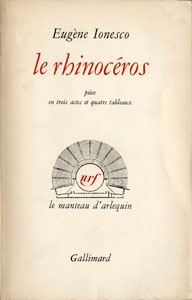 Please click on the cover above to see more pages from the book of Ionesco's play that the Foundation owns (PDF, 0.8MB) Please click on the cover above to see more pages from the book of Ionesco's play that the Foundation owns (PDF, 0.8MB)Additional Material 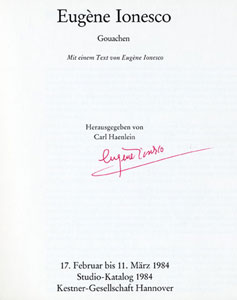 One of the signed books by Eugene Ionesco from the Foundation's repository One of the signed books by Eugene Ionesco from the Foundation's repository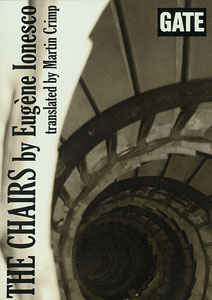 A flyer for Ionesco's The Chairs, translated by Martin Crimp. The play was shown at the Gate Theatre in Notting Hill, London in December 2006. A flyer for Ionesco's The Chairs, translated by Martin Crimp. The play was shown at the Gate Theatre in Notting Hill, London in December 2006.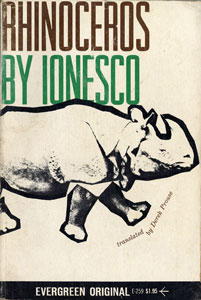
|
|||||
 |
|
||
|
|||
